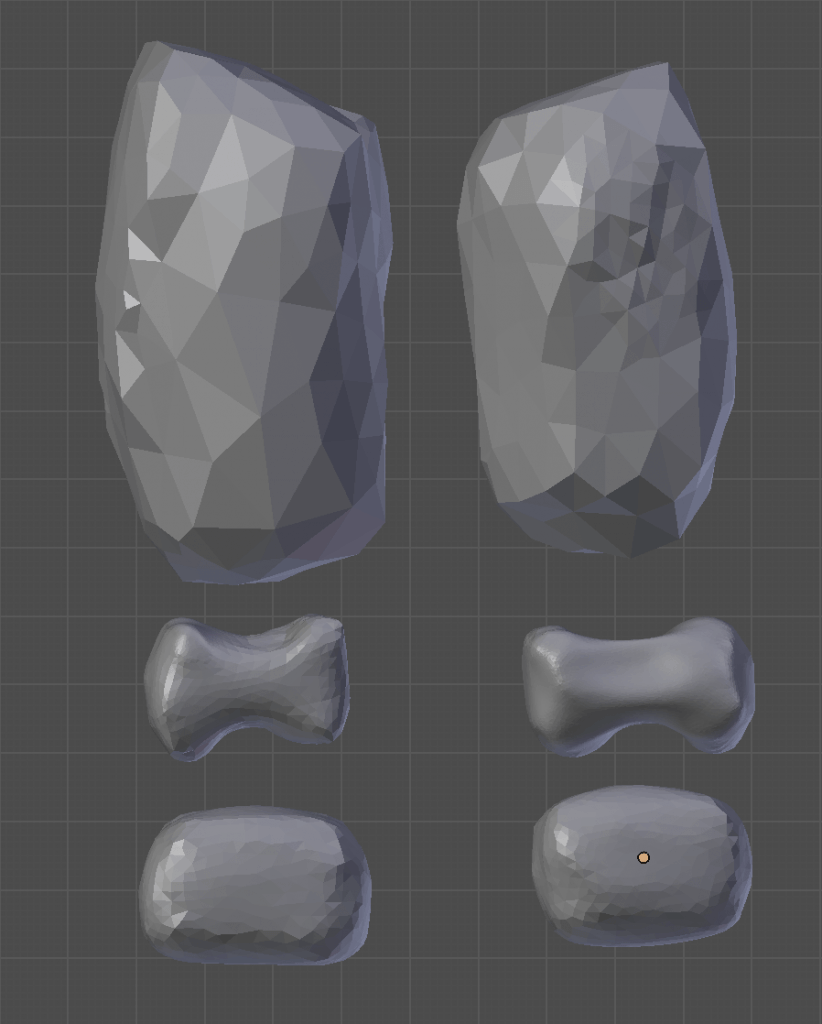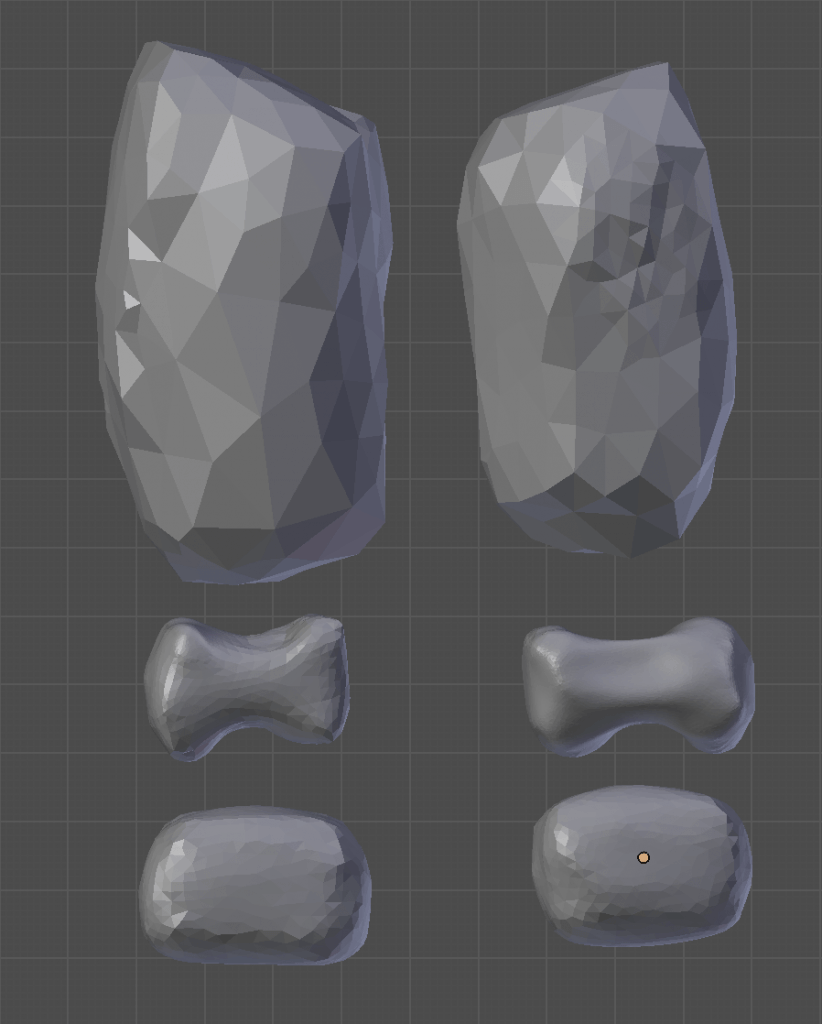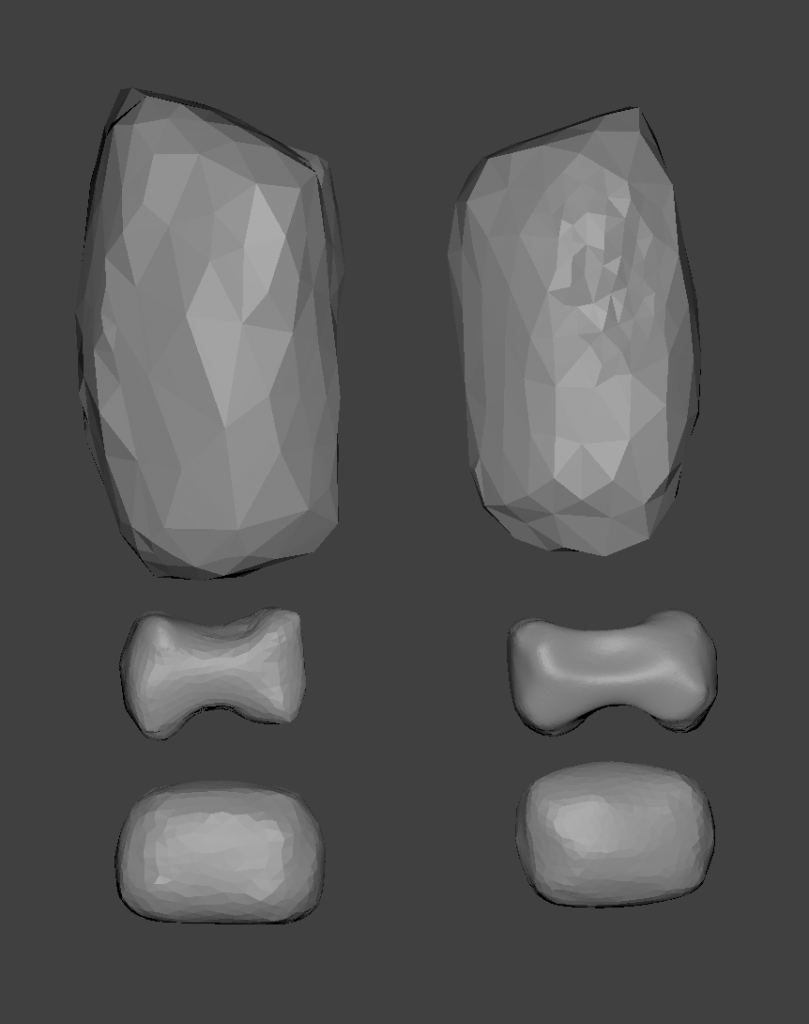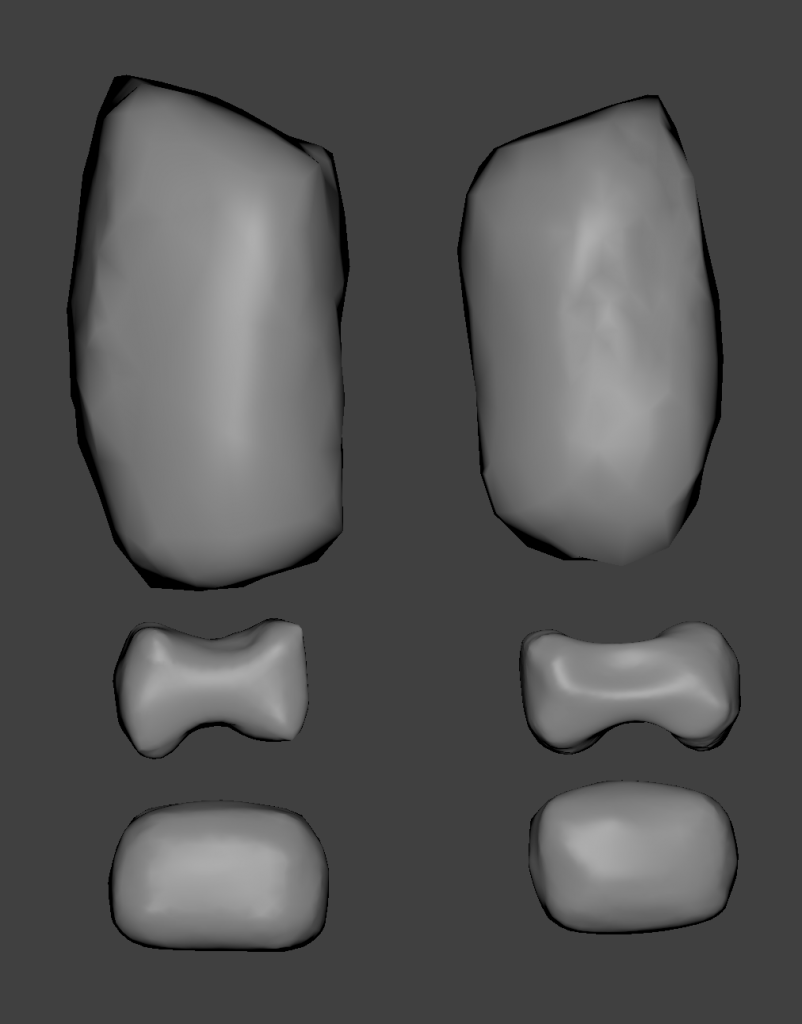Intended Outcome:
- Complete the Arms.
Problems I encountered and how I overcame them:
- This session was rather short, and I only managed to complete the arms and the hands. One difficulty I found when sculpting was getting the size of the hands to look right. As I had the image next to my modelling window, I could estimate the size from the front, but making the thickness look proportional was difficult. I Experimented with different thicknesses before deciding on the outcome below, and I could still alter it if I decide it looks too thin or too thick when placed next to the completed Torso.
- As I have mentioned in previous posts, I wanted to get used to the basics of Blender again. To do so, I watched Blender Guru’s Anvil tutorial, which taught me a lot. I had previously learnt that sculpting is much easier if you start with a mesh that is as close to the shape of your intended outcome as possible, so learning how to do so made me more comfortable in modelling. I also became more comfortable with he controls and shortcuts in Blender, which helped with the speed of this session
The main tools and tips I learnt in this tutorial was using the G shortcut to move vertices, and using O to enable and disable proportional editing when appropriate.
I unfortunately lost the footage to this modelling session, however I have included as many screenshots as I felt necessary to show you my progress.
Where to go from here:
- Create the fingers making sure they are all unique.
- Use the view shortcuts more to make things more proportional.
Sources:
Guru, B. (2017). Available at: https://youtu.be/yi87Dap_WOc [Accessed 01 Dec. 2017].















